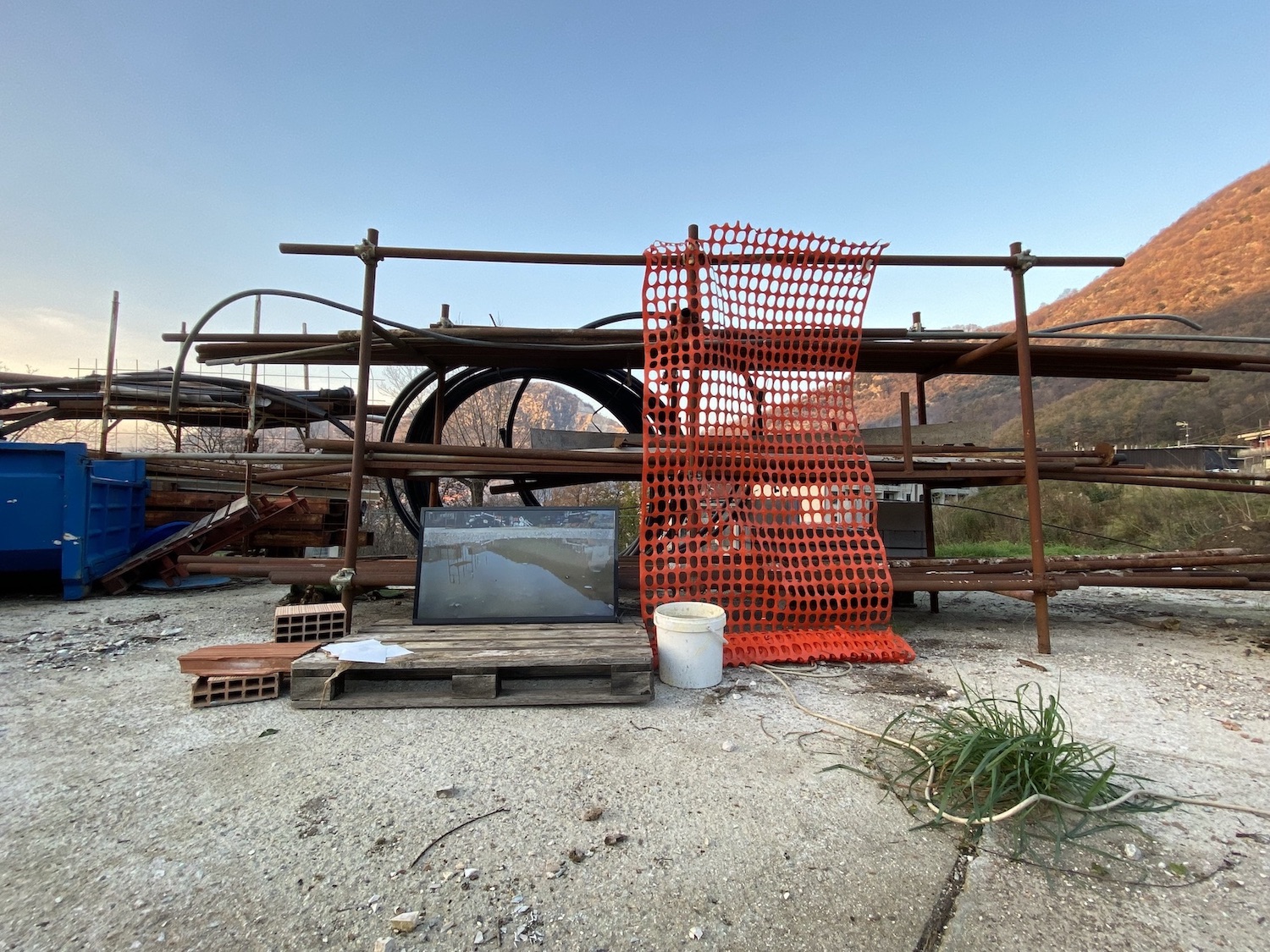unrehearsed filming; can provide a sense of dynamism, immersion and instability.
This audio-visual short evokes a poetic of the elements that make visible some of the mechanics of reality and the symbolism
in the built environment.
Debris
becomes a storytelling entity. Perhaps, it's violence and how all things are shaped at will or turn to dust.
All of these and none of them - and what's the difference anyway, what is matter, what is truth?
This is,
indeed, an old argument.
Something about this video feels a lot like thought. The mind spends a lifetime thinking,
zooming in and out and nothing of reality’s essence is broken. So who knows what lies beyond the frame, what is left after memory.
The music manifests and hides. This may be the way how thoughts work. In sliding scales. At tempo. In panicked drones.
There are no breakthroughs here. It’s a work that harbors secrets and emotions between striking notes of tension and release. Like music.
update 19.11.2022
Drifting between post-phenomenology studies and artistic research, this audio-visual short uses agential realism to approach thinking with, through, and about the built environment.
Following Karen Barad’s dedication to diffraction as a form of critique, it superposes various camera choreographies in the longing that their consonances and dissonances can stimulate novel ways of engaging with
and perceiving the built environment as a cultural and material agent. It takes from the intertwined physical and metaphysical curiosities that characterize Barad’s work, proposing an engagement with the temporal and spatial (dis)continuities
that matter helps to understand.
Enormous amounts of materials and energy are embedded in the built environment. As our technological systems scale up,
can they bring configurations that are regenerative by design? What if we understood our reality to be much more bound up and reactive to our perceptions
and intentions - shifting at levels and in ways that were not entirely predictable? How can this build up our confidence in making a change?
Filmed using the handheld camera technique, the audio-visual narrative explore possibilities of shifts in perspectives through the reconfiguration of relations of scale, exteriority,
and connectivity. In a post-phenomenological sense, what is produced by the video camera is an immediate and live ‘taking in’ of the world shaped by the technical/perceptual apparatus
of the camera – just as the human nervous system shapes the visions that seem to ‘hit’ the eye.
Shot on a family-run workshop in southern Italy, this piece is a commentary on the idea of scale and human development within the context of the global energy crisis amid supply chain shortages
and the rising costs of raw materials.
update 16.01.2023 - installation view @ via panoramica, solofra (av), italy

I often hear questions about assessing the environmental impact of A versus B answered with a standard metric (usually in the quantity of carbon released).
My father has been working in the construction sector for over four decades. I asked him if there is an environmental impact index out there that encompasses multiple metrics at once, what are the steps to take during an Environmental Impact Assessment (EIA) and if it’s possible to trace the footprint
of a construction work. While EIA procedures are established in many countries, there is considerable soul-searching about how effective it is and whether EIA is achieving its purposes (especially if EIA stakeholders aren't reading from the same script).
So this is an intervention I did in my father's workshop area, while thinking about these things. I consider it to be a work in progress. The sculpture attempts to take in materials and
resources that are used in the built environment. These materials are tied to “human development concepts”,
including land ownership, security, and entrepreneurship among others. It consists of a metallic scaffold with a tube-and-joint system, introduced and patented in 1935 by Italian inventor and entrepreneur
Ferdinando Innocenti (1891 - 1966), and widely used today. The iron pipes have been rusting outdoor for nearly twenty years and re-assembled to form the type of temporary scaffolding used to support a work crew and materials in the construction, demolishing,
and maintenance of human-made structures in the built environment. This temporary entity attempts to count its components' environmental impact (an abstract concept, potentially unmeasurable) by looping a video memory of its components' debris and the surrounding area.
materials: oxidized-iron scaffolding frame (2 meters high, 4 meters long connected to Innocenti Tubes through orthogonal joints), copper electrical wires, electronics,
steel pipes of varying length, plumbing systems’ tubes in zinc-plated iron of varying length, black polyethylene pipes for aqueducts and distribution of water for human consumption, rainwater harvested in a plastic bucket,
glass screen, cement bricks, structural clay tile blocks, industrial fencing mesh in polypropylene, paper-print energy bills, standard wooden pallet, electricity.